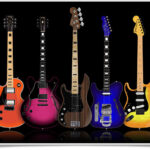When you’re looking to trade in or sell your used guitar gear, Guitar Center might seem like a convenient option. But if you’re wondering, How Much Does Guitar Center Pay For Used Gear? – it’s crucial to understand the reality of their pricing and how it compares to other avenues. Let’s dive into what you can expect and why.
Guitar Center, like most large retailers, operates on a business model that prioritizes the sale of new inventory. Used gear takes up valuable floor space that they’d rather dedicate to items with higher profit margins. As a result, their offers for used equipment are often lower than what you might hope for.
Industry insiders and experienced musicians often suggest that Guitar Center typically pays around 30-35% of the used market value for instruments and equipment. This percentage reflects their need to factor in several costs:
- Overhead: Guitar Center has significant operational expenses, including rent, utilities, staffing, and marketing. These costs need to be covered by their sales, impacting how much they can offer for used gear.
- Profit Margin: Like any business, Guitar Center aims to make a profit. They need to resell your used gear at a price that covers their initial purchase cost, refurbishment (if needed), and contributes to their overall revenue.
- Risk and Inventory Turnover: Used gear can be less predictable in terms of sales compared to new, in-demand items. Lower offers help mitigate the risk of holding onto used inventory for extended periods.
“Yep. You’re gonna get hosed,” as one experienced forum user bluntly put it, echoing a common sentiment among musicians familiar with trade-in processes. This doesn’t necessarily mean Guitar Center is unfair, but rather that their business model is structured to favor new gear sales and manage the complexities of the used market efficiently.
Exploring Alternatives to Maximize Your Return
While selling to Guitar Center offers convenience, it’s essential to consider other options if maximizing your return is a priority:
- Private Sales: Selling directly to another musician through online marketplaces (like Reverb, Craigslist, or Facebook Marketplace) or local classifieds can yield significantly higher prices. You control the pricing and can negotiate directly with buyers.
- Online Auctions: Platforms like eBay can expose your gear to a wider audience and potentially drive up the price through competitive bidding. However, factor in seller fees and shipping complexities.
- Consignment at Local Stores: Some smaller, independent guitar stores offer consignment services. They’ll display and sell your gear, taking a percentage of the final sale price. This can sometimes offer a better balance between convenience and return compared to selling directly to a large retailer.
The Used Market Dynamics
The used gear market itself is influenced by various factors, including demand, condition, rarity, and brand reputation. As the original forum post mentioned, the rise of the used market in recent years has created opportunities to find good deals and also to sell used gear. However, this also means prices are subject to market fluctuations and competition.
Conclusion: Manage Your Expectations
If convenience and a quick transaction are your primary goals, selling to Guitar Center can be a viable option. However, be prepared to receive an offer that’s considerably lower than the potential private sale value of your gear. Understanding their business model and exploring alternative selling methods will empower you to make the most informed decision when parting ways with your used guitars and equipment.

